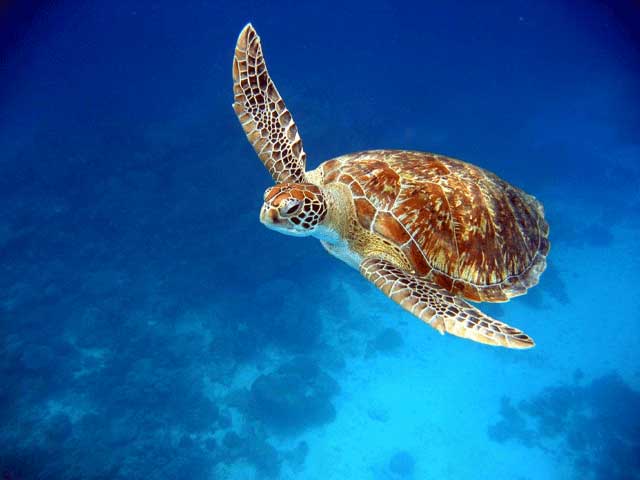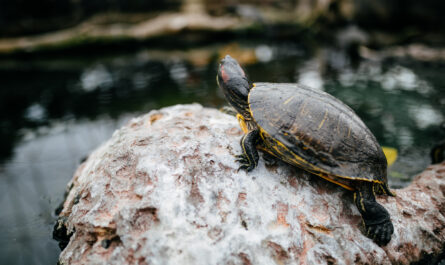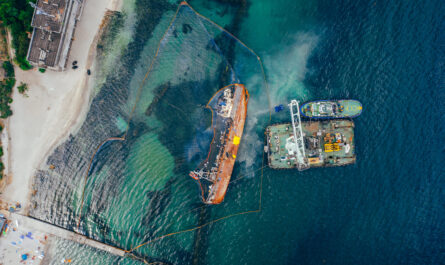Sea turtles, majestic creatures that have roamed the oceans for over 100 million years, are now facing numerous threats that put their survival in jeopardy. The Pacific Ocean, which hosts five of the world’s seven sea turtle species, has become a focal point for both these dangers and ongoing conservation efforts. As human activities, climate change, and habitat destruction continue to endanger sea turtles, a combination of international, regional, and local initiatives are working to protect these ancient mariners.
1. Major Threats to Sea Turtles in the Pacific
The threats facing sea turtles in the Pacific are varied and complex, but they can be grouped into several key categories:
- Habitat Degradation: Nesting beaches, crucial for sea turtle reproduction, are being destroyed or altered by coastal development, erosion, and rising sea levels. Many nesting sites, particularly in the Coral Triangle (an area of exceptional marine biodiversity), are also disrupted by human activities such as tourism, construction, and pollution.
- Bycatch: One of the most serious threats to sea turtles is bycatch, the unintentional capture of turtles in fishing operations. Longlines, gillnets, and trawl fisheries are notorious for ensnaring sea turtles, which often drown when trapped underwater. In the Pacific, countries like Indonesia, Japan, and Mexico are significant contributors to the bycatch issue, given their expansive fisheries.
- Pollution: The ocean is increasingly polluted with plastic debris, which poses a significant danger to sea turtles. They mistake plastic bags for jellyfish (a common food source), leading to ingestion that can cause internal blockages and death. Oil spills and chemical runoff also damage the delicate ecosystems sea turtles rely on.
- Climate Change: Rising global temperatures pose a dual threat to sea turtles. First, warmer ocean waters contribute to the loss of coral reefs and seagrass beds, which serve as crucial feeding grounds. Second, temperature-dependent sex determination means that the temperature at which sea turtle eggs incubate determines the sex of hatchlings. Warmer temperatures can result in skewed sex ratios, with more females being born, potentially disrupting future reproduction.
- Illegal Harvesting and Poaching: Despite protective laws, sea turtles are still hunted for their meat, eggs, and shells in certain regions of the Pacific. The hawksbill turtle is especially prized for its shell, which is used to make jewelry and ornaments, despite the Convention on International Trade in Endangered Species (CITES) banning the trade of turtle products.
2. Global and Regional Conservation Initiatives
Across the Pacific, a range of international and regional efforts are being made to safeguard sea turtles and their habitats:
- CITES and the Inter-American Convention (IAC): Global frameworks like CITES and the IAC have been instrumental in reducing the illegal trade of turtle products and fostering international cooperation to protect sea turtles. By ensuring that countries enforce strict regulations on turtle harvesting and promote sustainable practices, these agreements play a crucial role in protecting sea turtles on a larger scale.
- United Nations Sustainable Development Goals (SDGs): The UN’s SDG 14, which focuses on conserving and sustainably using the oceans, includes specific targets for reducing marine pollution and conserving coastal and marine ecosystems. These goals support the broader conservation efforts aimed at protecting marine species like sea turtles.
- The Coral Triangle Initiative (CTI): The Coral Triangle, encompassing countries like Indonesia, Malaysia, the Philippines, Papua New Guinea, and Timor-Leste, is home to critical sea turtle habitats. The CTI aims to address threats to marine biodiversity through regional cooperation, focusing on protecting coral reefs, marine life, and coastal resources that are vital to sea turtles.
3. Community-Based Conservation Programs
Local communities play a vital role in the success of sea turtle conservation efforts across the Pacific. Many community-led projects focus on educating local populations, protecting nesting beaches, and ensuring sustainable livelihoods that are compatible with conservation goals:
- Papua New Guinea and the Hawksbill Turtle: In Papua New Guinea, indigenous communities are heavily involved in protecting the endangered hawksbill turtle. Through nesting beach patrols and hatchery programs, locals help monitor turtle populations, ensuring that nests are not poached and that hatchlings make it to the ocean safely.
- Fiji’s Turtle Conservation Network: In Fiji, the Turtle Conservation Network collaborates with local communities to safeguard nesting beaches, tag turtles for research purposes, and raise awareness of the importance of sea turtles to both local ecosystems and tourism. Eco-tourism has become a significant driver of conservation, with visitors supporting initiatives that protect turtles while providing economic benefits to the community.
- Indonesia’s Turtle Rangers: On the beaches of Bali, Turtle Rangers protect sea turtle nests from predators and poachers. They run hatcheries, where eggs are relocated for protection, and lead education programs that teach tourists and locals about the importance of sea turtles to marine ecosystems.
4. The Role of Technology in Turtle Conservation
Advancements in technology have greatly enhanced the ability of scientists and conservationists to protect sea turtles. Some of the most impactful technologies include:
- Satellite Tracking: Satellite tagging of sea turtles has revolutionized our understanding of turtle migration patterns. By tracking the movement of tagged turtles, researchers can identify critical foraging and nesting grounds and assess how these locations are affected by human activities. For example, tracking projects in the South Pacific have revealed long migration routes from nesting beaches in Australia to feeding grounds as far as South America.
- Drone Technology: Drones are increasingly used to monitor nesting sites and coastal areas. They provide real-time data on sea turtle activities, track potential threats, and help conservationists assess the impact of erosion and human disturbance on nesting habitats. In Hawaii, drones have been deployed to study how sea turtle populations are responding to changes in climate and habitat.
- Turtle Excluder Devices (TEDs): TEDs are another critical technological advancement that has helped reduce bycatch. These devices allow sea turtles caught in fishing nets to escape, significantly lowering turtle mortality in fisheries. Countries such as the United States, Mexico, and Australia have adopted TEDs in their shrimp trawling industries, leading to notable reductions in bycatch.
5. Hatchery Programs and Beach Restoration
Hatchery programs are central to the protection of sea turtle populations, especially in regions where natural nesting beaches are threatened by poaching or habitat degradation. Hatcheries, often managed by local communities or conservation organizations, relocate turtle eggs from vulnerable nests to protected areas. Once the hatchlings emerge, they are safely released into the ocean.
- Bali Sea Turtle Society: In Bali, the Bali Sea Turtle Society runs one of the region’s most successful hatchery programs. Each year, the organization relocates thousands of eggs to secure hatcheries, where they are carefully monitored until hatching. The hatchlings are then released in large public events, raising awareness about the importance of sea turtles to local ecosystems.
- Costa Rica’s Hatchery Success: In Costa Rica, which is home to Olive Ridley turtles, large-scale hatchery programs have helped boost the survival rates of hatchlings. This Central American country is known for arribadas, mass nesting events where tens of thousands of turtles come ashore simultaneously to lay their eggs. Hatcheries protect these eggs from predators, poachers, and natural threats such as erosion and flooding.
6. Climate Change and the Future of Sea Turtles
As climate change continues to alter marine environments, the future of sea turtles depends on adaptive conservation measures. Rising sea levels, increasing storm frequency, and warming temperatures will likely exacerbate the threats facing sea turtles. Conservationists are exploring new approaches to ensure these species’ survival:
- Protecting Climate-Resilient Beaches: Identifying and protecting beaches that are less vulnerable to climate change is a key strategy. Beaches with cooler sands, for example, can support a more balanced sex ratio among hatchlings, which is vital for the long-term health of turtle populations.
- Restoring Coastal Ecosystems: Healthy coastal ecosystems, such as mangroves, seagrass beds, and coral reefs, are essential for protecting sea turtles from the impacts of climate change. These ecosystems provide nesting and foraging grounds and act as natural buffers against rising seas and coastal erosion.
Conclusion
Protecting sea turtles across the Pacific is an ongoing battle against numerous threats, both natural and human-made. The combined efforts of local communities, international organizations, and governments, supported by technological advancements, have made significant strides in conservation. However, as climate change accelerates and human pressures increase, even more innovative solutions and global cooperation will be needed to ensure the survival of these ancient ocean wanderers. With continued dedication to conservation, we can hope that sea turtles will continue to thrive in the Pacific for generations to come.



